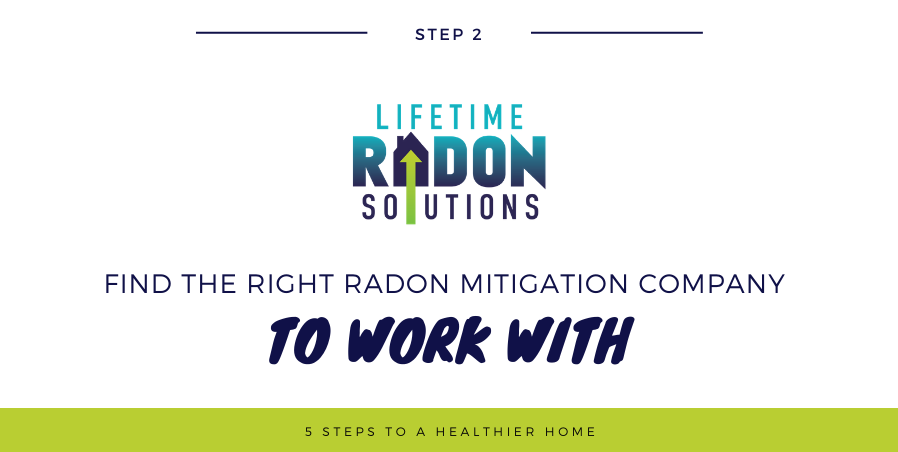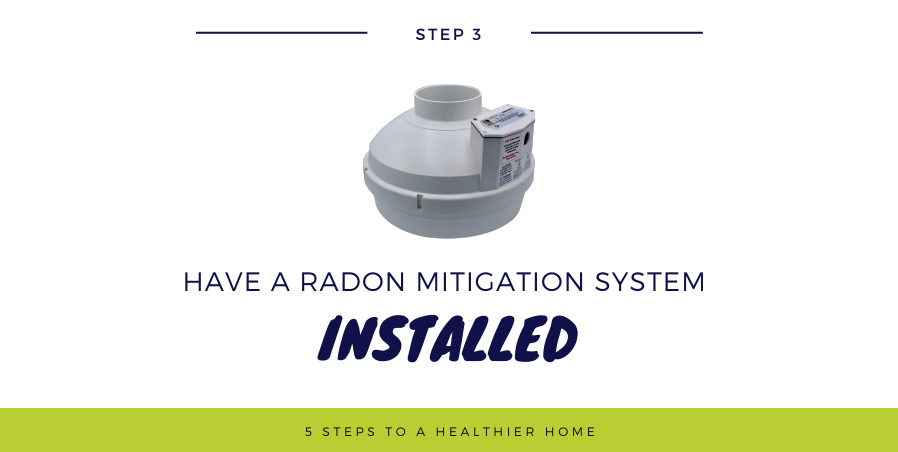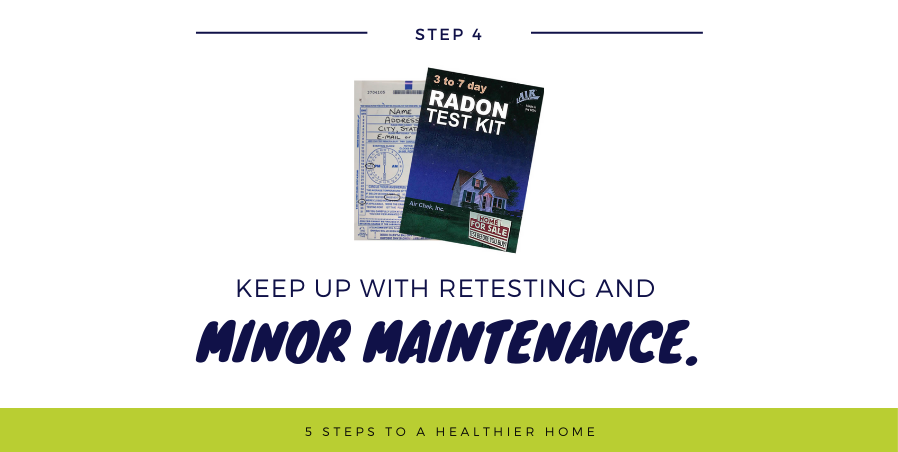|
As you may have heard from us before, testing your home for radon is an extremely important action to take for your lung health. Radon being the second leading cause of lung cancer (second only to smoking) is something we should all be mindful of no matter where we reside. Once you have taken the crucial first step in testing your home for radon some of you may get an undesirable result in the form of an elevated radon test result. Having your home test high for radon can be a very stressful thing, so what is the next step? In this article we are going to go over the easiest and least stressful plan of attack to rid your home of radon gas. Step 1: Learn More About Your Test ReadingOnce you have received your test results, give your local radon mitigation expert a call and have them explain what those results mean. If you live in the U.S, the EPA recommends taking action if your home tests at 4.0 picocuries per liter (pCi/L) or above. The World Health Organization however has taken a more cautious approach to their recommendation and sets their action level at 2.7 pCi/L. What is a picocurie? In layman's terms, a picocurie is the way we measure the rate of radioactive decay of radon. To get a little more technical, the Kansas State national radon program describes a picocurie as “one trillionth of a curie, 0.037 disintegrations per second, or 2.22 disintegrations per minute. Therefore, at 4pCi/L (picocuries per liter - the EPA's recommended action level), there will be approximately 12,672 radioactive disintegrations in one liter of air during a 24-hour period.” (Kansas State University, "Radon Basics"). As a general rule of thumb, consulting a radon professional is recommended for any radon test result you receive-whether it is elevated or lower than the recommended action level. Step 2: Find the Right Radon Mitigation Company to Work WithIf you live in an area that is known to have a high probability of elevated radon levels (Check out this radon map to see what radon zone you live in) there will be many different radon mitigation companies to choose from. How can you differentiate each company and choose the best one? In our experience, a good radon company has the following:
Step 3: Have a Radon Mitigation System InstalledOnce you have picked the right company to install a radon mitigation system in your home, it’s time to start the install. As mentioned before, there are multiple options for mitigation depending on the home. The three main factors a good radon company will consider with regard to placement of the system are aesthetics, effectiveness, and EPA/AARST/NRPP standards. When the radon technician enters your home for the first time, ask them to show you multiple options for install and their thought processes behind each location. You may then choose which spot you are most comfortable having the system placed. In many homes, the only option is the run the radon system from the basement to the exterior of the home to vent above the roofline. However if the home has an attached garage and unfinished basement sharing a common wall with said garage, the system can be run up through the garage to vent through the roof for a more aesthetically pleasing option. Click HERE to read more about garage vs. exterior venting options. Step 4: Keep Up With Retesting and Minor Maintenance.After you’ve had a radon mitigation system installed in your home and retested with acceptable results, you can finally relax for a while. Radon systems do not require too much maintenance from the homeowner, the main things we recommend that you do are:
So as you can see, maintaining your radon mitigation system is very simple and painless. If you have any issues with your system such as a loud fan, or a loss of vacuum pressure, give your installer a call! Step 5: Inform your Friends and FamilyRadon gas is not something to take lightly and unfortunately much of the public is unaware of its dangers. If you have a good experience with the company that installed your system, tell your friends and family! A referral to a radon company can save lives! Thank you for taking the time to read up about radon mitigation! You will not regret this crucial home improvement project once it’s installed. Stay safe! Andrew KreklowLifetime Radon Solutions
10 Comments
|
AuthorBrian S. Thompson Archives
March 2023
|
- Home
-
Locations
- Lifetime Radon Mitigation Minneapolis
- Lifetime Radon Mitigation Milwaukee
- Lifetime Radon Mitigation Fond du Lac
- Lifetime Radon Mitigation La Crosse
- Lifetime Radon Mitigation Oshkosh
- Lifetime Radon Mitigation Eau Claire
- Lifetime Radon Mitigation Wausau
- Lifetime Radon Mitigation Green Bay
- Lifetime Radon Mitigation Janesville
- Lifetime Radon Mitigation Rochester
-
Services
- Radon Mitigation
- Radon Testing
- FREE Radon Testing
- Crawl Space Encapsulation
- Trichloroethylene (TCE)
- Commercial Radon Testing and Mitigation
-
Local Articles
>
- Lifetime Radon Mitigation Brookfield
- Lifetime Radon Mitigation Madison
- Lifetime Radon Mitigation Plymouth
- Lifetime Radon Mitigation Brooklyn Park
- Lifetime Radon Mitigation West Allis
- Lifetime Radon Mitigation Racine
- Lifetime Radon Mitigation Menomonee Falls
- Lifetime Radon Mitigation Muskego
- Lifetime Radon Mitigation Maple Grove
- Lifetime Radon Mitigation Greenfield
- Lifetime Radon Mitigation Franklin
- Lifetime Radon Mitigation Fitchburg
- Lifetime Radon Mitigation Whitefish Bay
- Lifetime Radon Mitigation Hartford
- Lifetime Radon Mitigation New Berlin
- Lifetime Radon Mitigation Shorewood
- Lifetime Radon Mitigation Blaine
- Lifetime Radon Mitigation Appleton
- Lifetime Radon Mitigation Whitewater
- Lifetime Radon Mitigation Cudahy
- Lifetime Radon Mitigation Germantown
- Lifetime Radon Mitigation Sun Prairie
- Lifetime Radon Mitigation Oak Creek
- Lifetime Radon Mitigation Coon Rapids
- Lifetime Radon Mitigation Beloit
- Lifetime Radon Mitigation Grafton
- Lifetime Radon Mitigation Cedarburg
- Lifetime Radon Mitigation Burlington
- Lifetime Radon Mitigation Caledonia
- Lifetime Radon Mitigation Richfield
- Lifetime Radon Mitigation Duluth
- Lifetime Radon Mitigation Brown Deer
- Lifetime Radon Mitigation Sussex
- Lifetime Radon Mitigation South Milwaukee
- Lifetime Radon Mitigation Middleton
- Lifetime Radon Mitigation Waunakee
- Lifetime Radon Mitigation Watertown
- Lifetime Radon Mitigation Mequon
- Lifetime Radon Mitigation Pleasant Prairie
- Lifetime Radon Mitigation Greendale
- Lifetime Radon Mitigation Wauwatosa
- Lifetime Radon Mitigation Glendale
- Lifetime Radon Mitigation Oregon
- Lifetime Radon Mitigation Port Washington
- Lifetime Radon Mitigation De Pere
- Lifetime Radon Mitigation Pewaukee
- Lifetime Radon Mitigation Oconomowoc
- Lifetime Radon Mitigation Manitowoc
- Lifetime Radon Mitigation Verona
- Lifetime Radon Mitigation Stevens Point
- Lifetime Radon Mitigation Fort Atkinson
- Lifetime Radon Mitigation Beaver Dam
- Lifetime Radon Mitigation Little Chute
- Lifetime Radon Mitigation Onalaska
- Lifetime Radon Mitigation Baraboo
- Lifetime Radon Mitigation Waupun
- Lifetime Radon Mitigation River Falls
- Lifetime Radon Mitigation Marshfield
- FAQ's
- Blog
- Meet the Team
- Contact
- Testimonials
- Privacy
Lifetime Radon Solutions, Inc.
Copyright © 2018
Copyright © 2018







 RSS Feed
RSS Feed